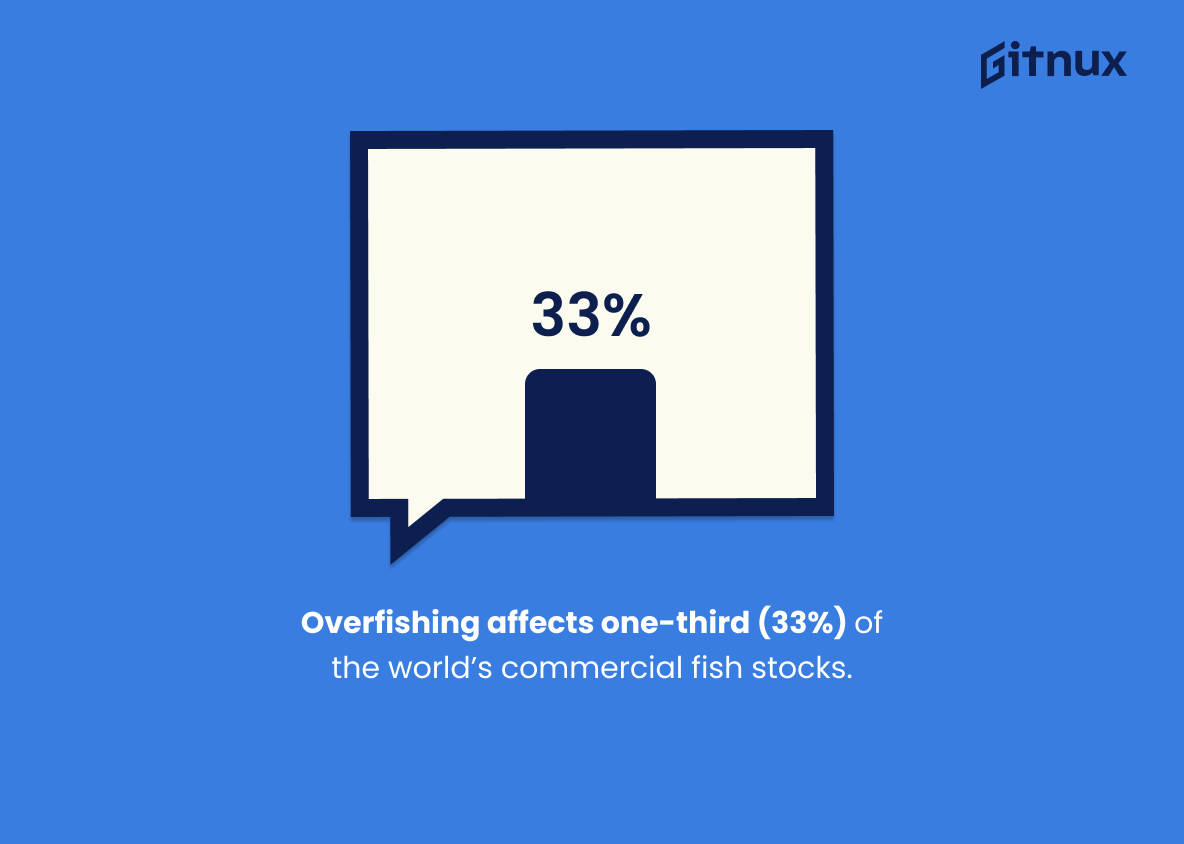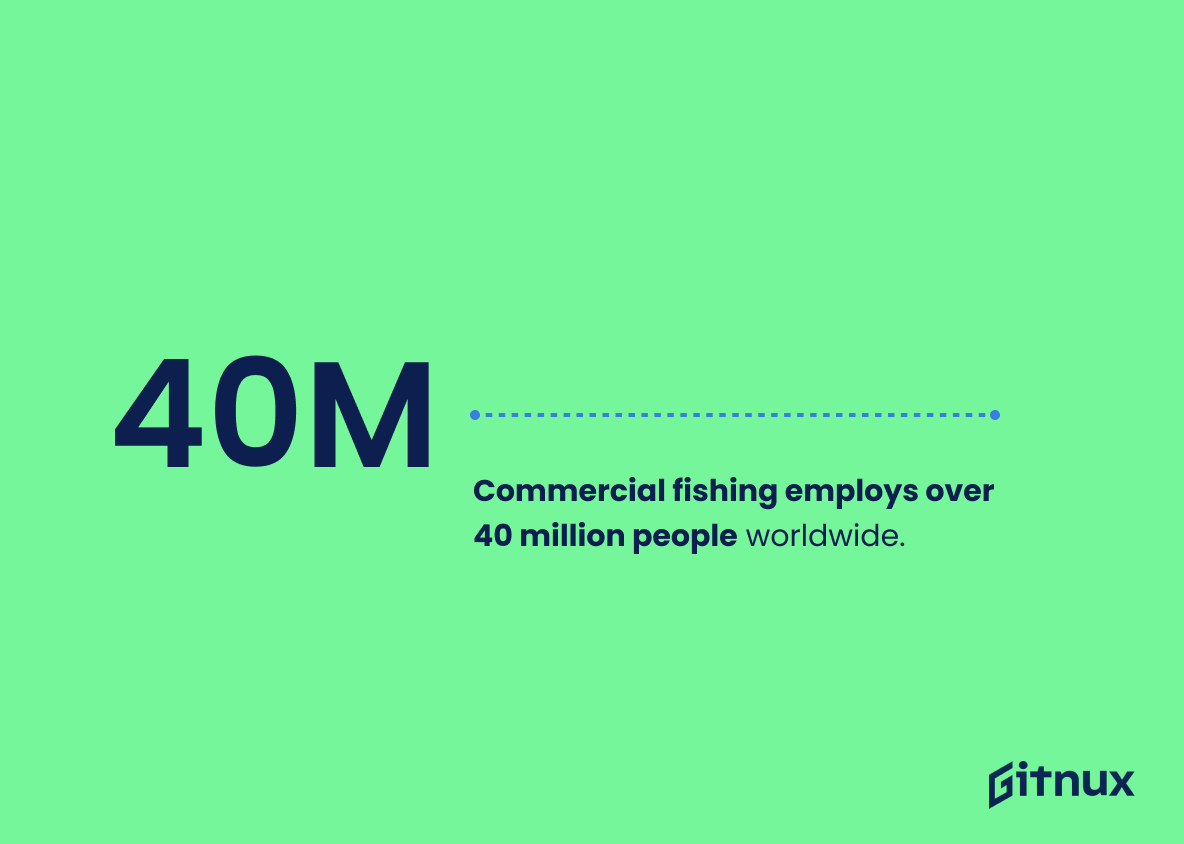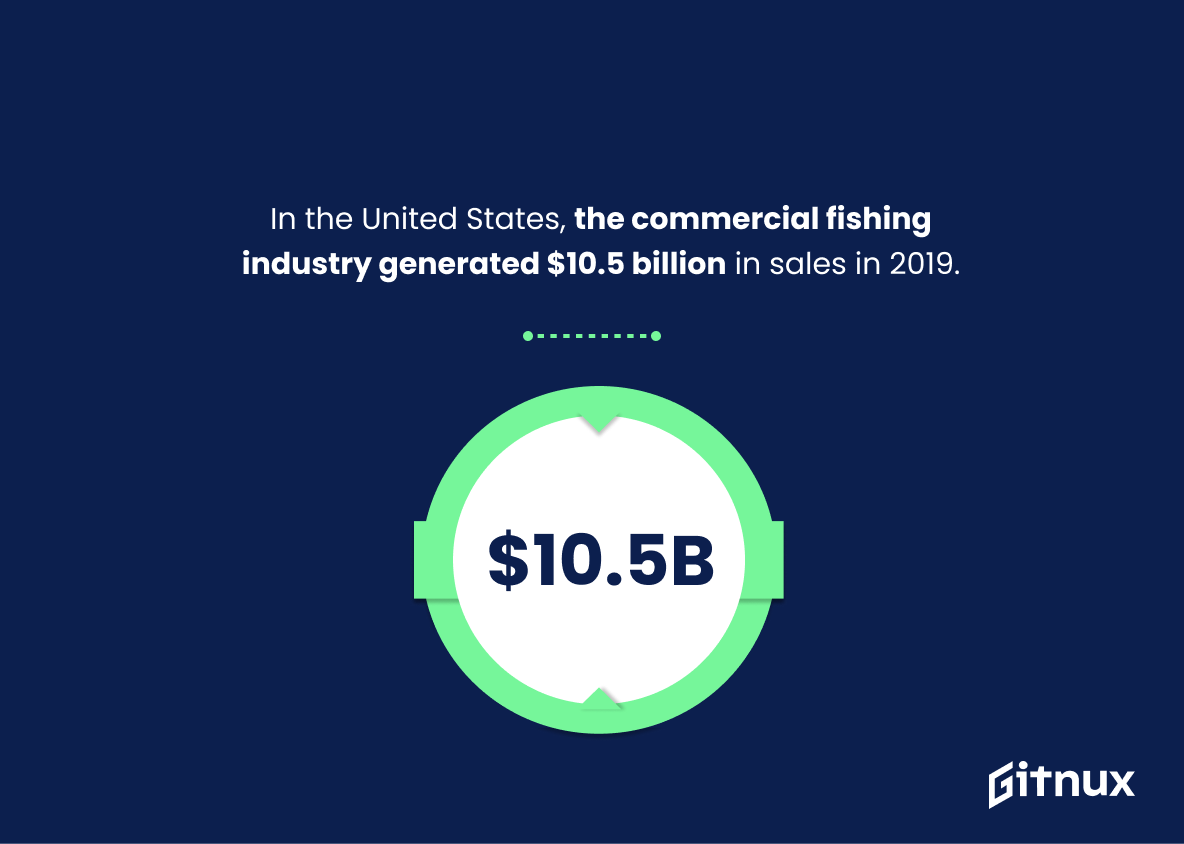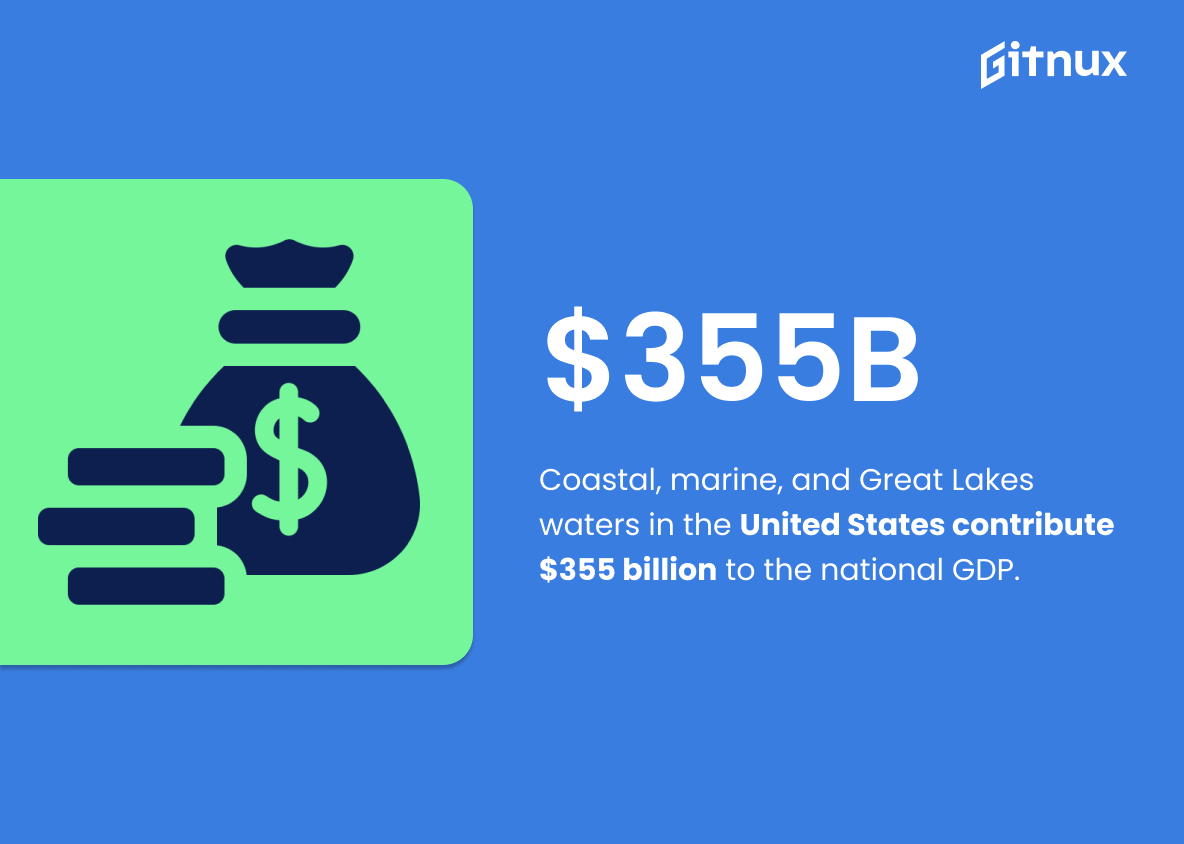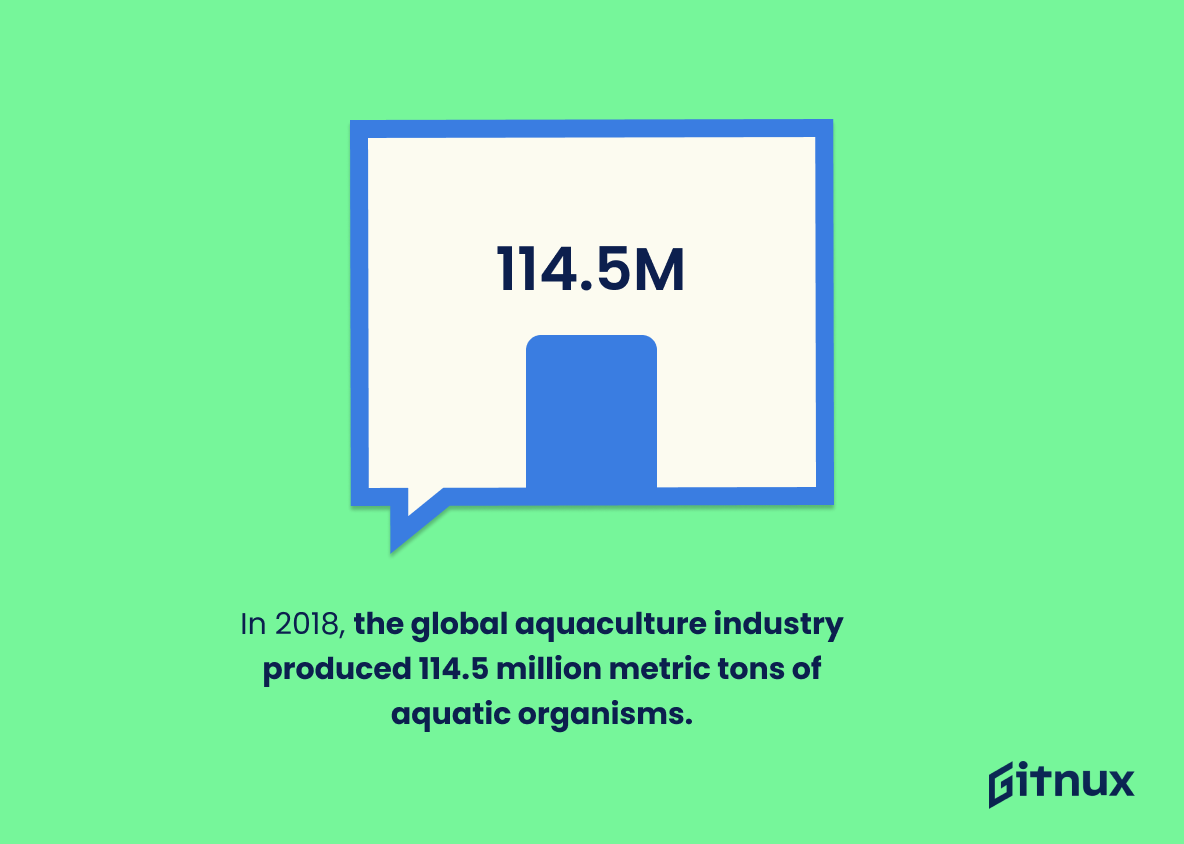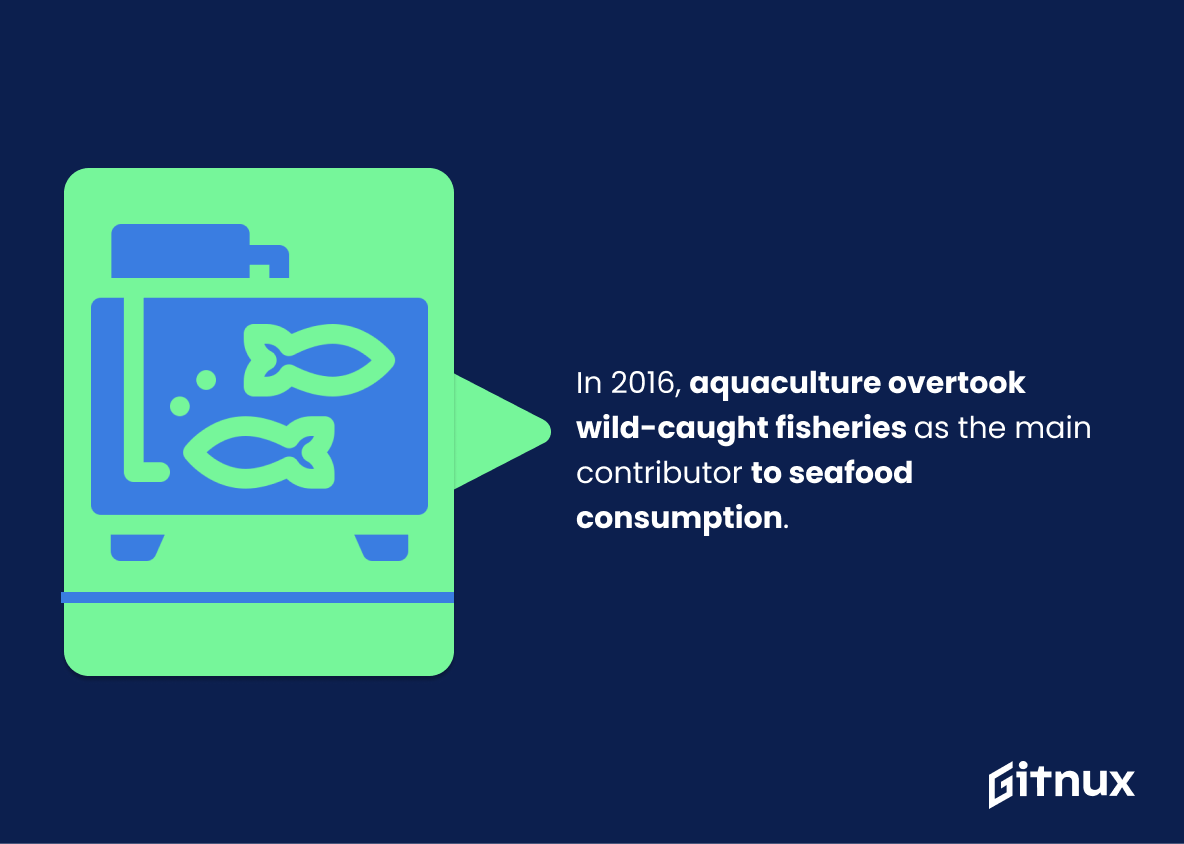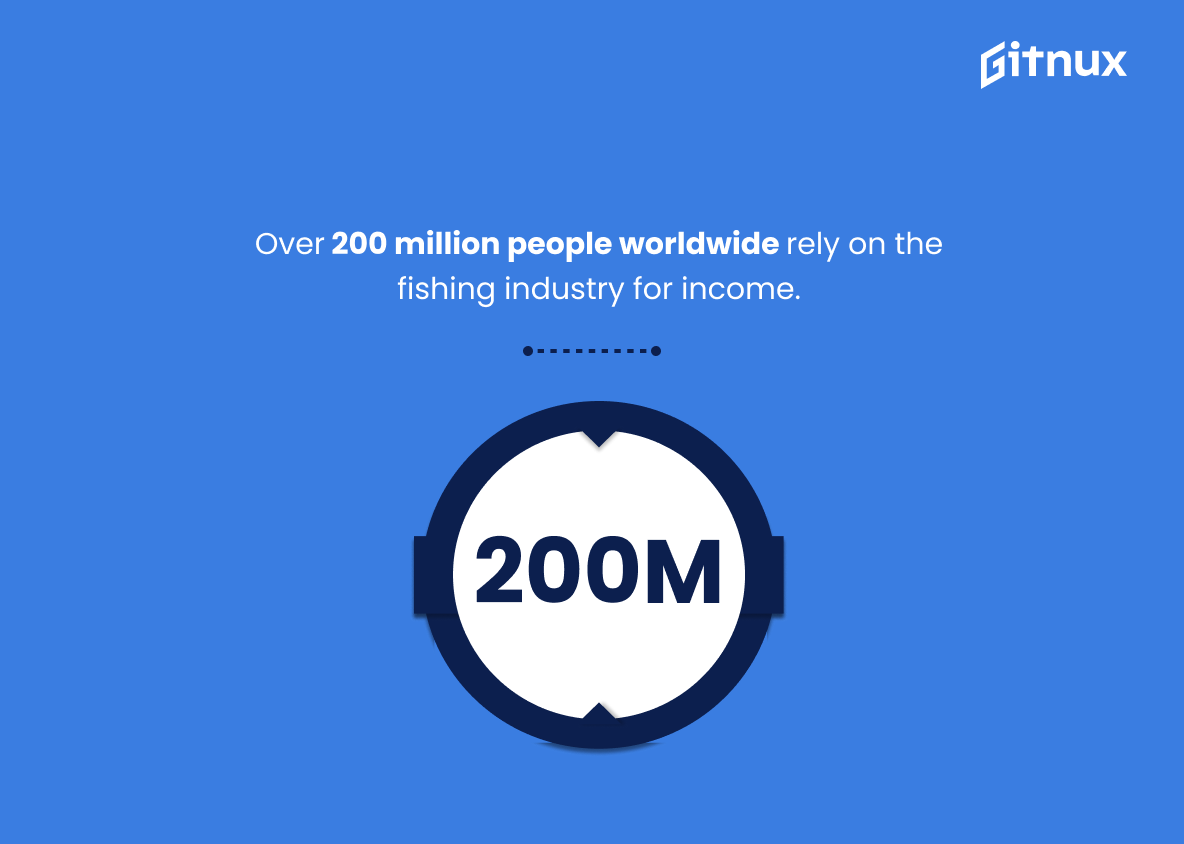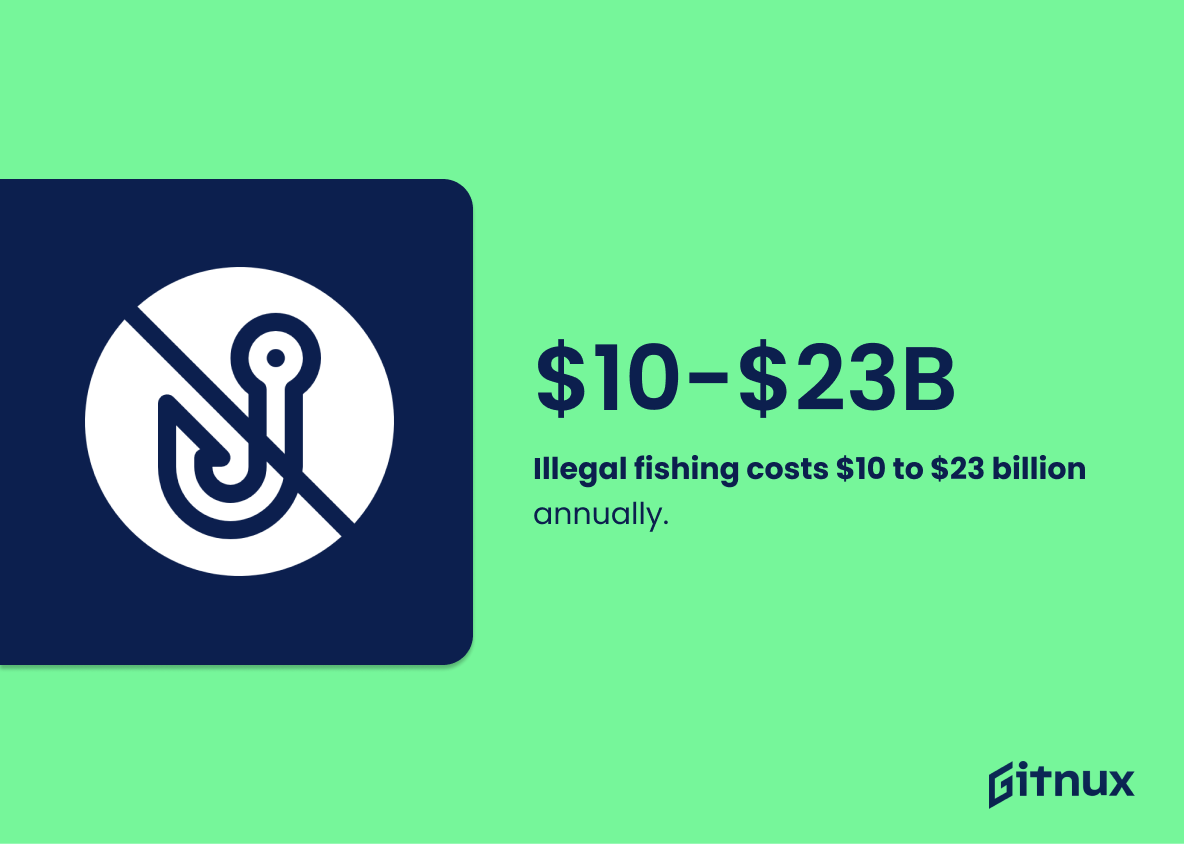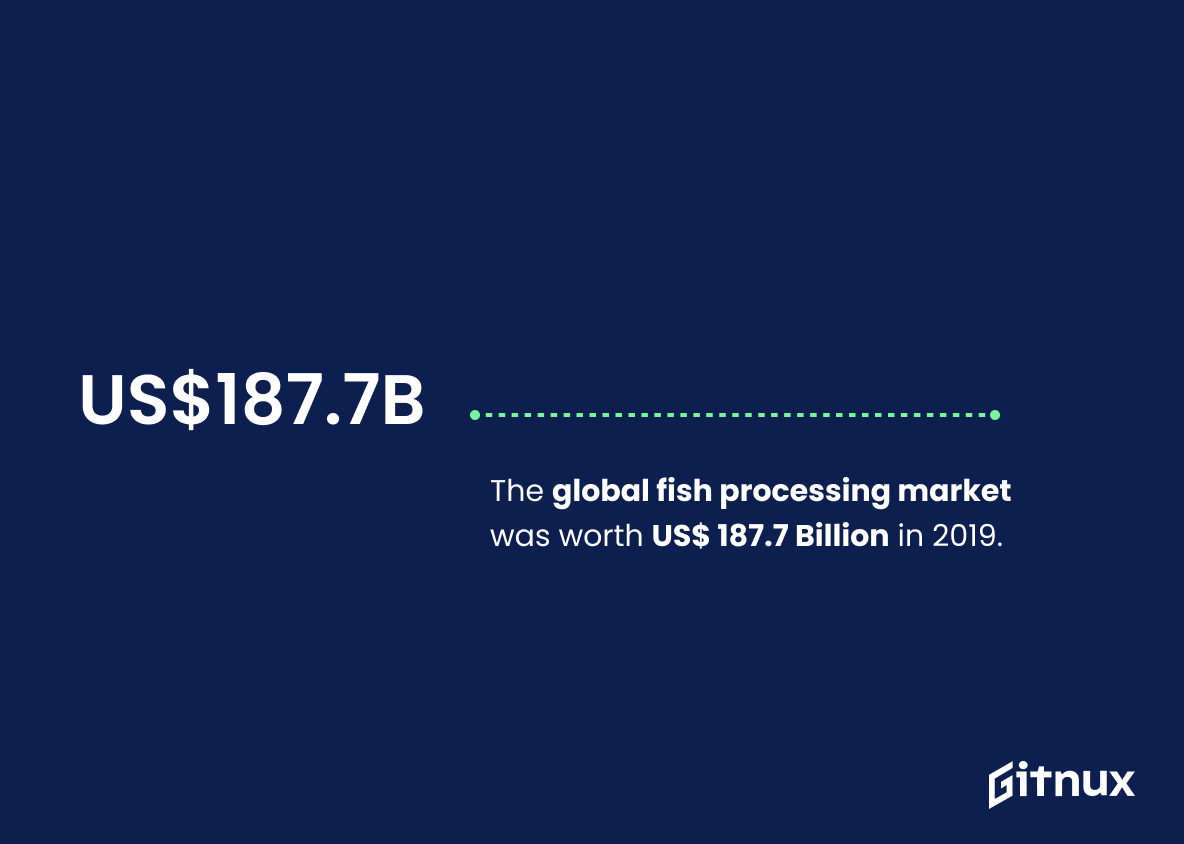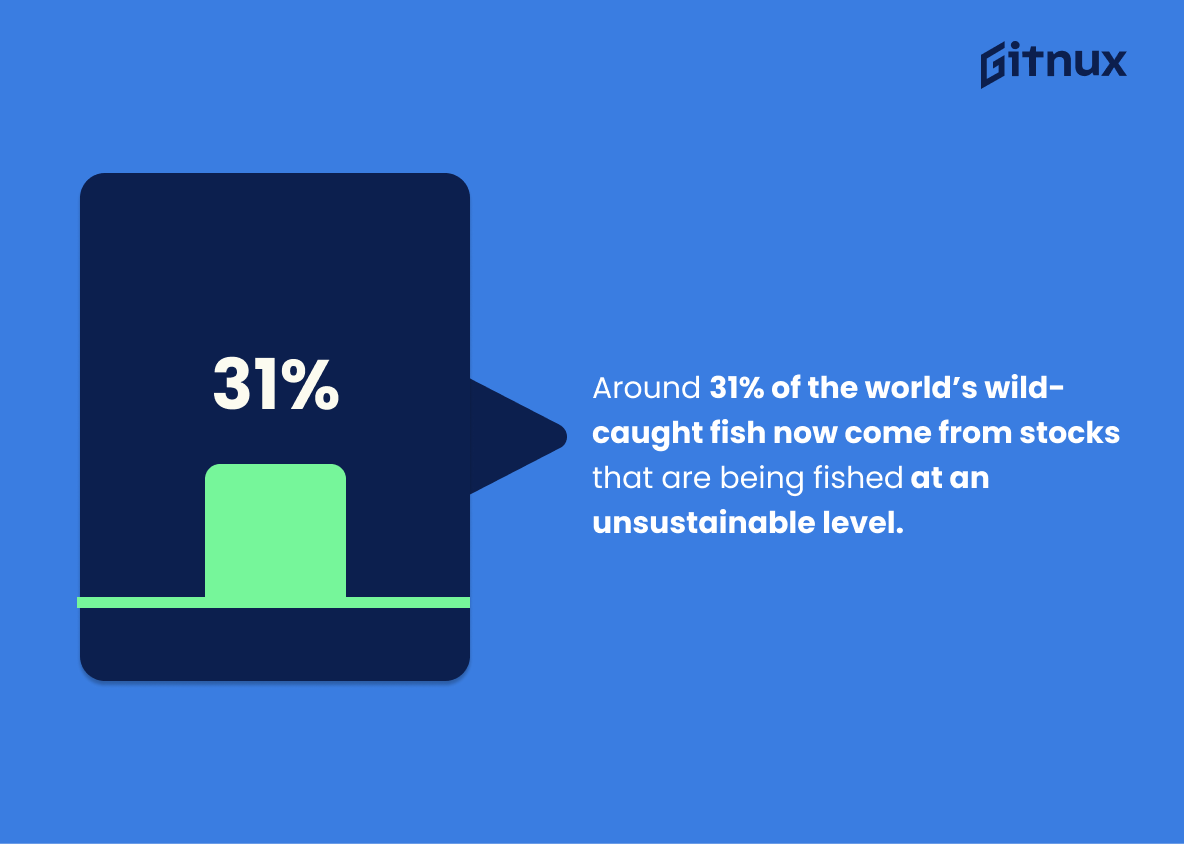The fishing industry is a major contributor to the global economy, with an estimated market value of $276.5 billion in 2020 and over 40 million people employed worldwide. Artisanal and small-scale fishing accounts for about 90% of all those employed in capture fisheries, while China produces 17.8 million metric tons of fish annually – making it the top producer globally. The sector also contributes 1.5% to global GDP and provides livelihoods for 59.5 million people around the world who are directly dependent on fisheries or aquaculture activities for their income generation opportunities.
Tuna fishing alone generates more than US$ 5 billion per year from Western and Central Pacific Ocean waters, while commercial sales within the United States reached 10.5 billion dollars in 2019 – demonstrating its importance as a key economic driver at both national and international levels alike. Coastal marine areas contribute 355 billion USD to America’s GDP each year too; however this success has come at a cost: one third (33%) of all commercial fish stocks are now being fished unsustainably due to illegal practices such as unreported catches which result in losses up to 23 Billion USD every single year.
In 2018, Europe had 83 000 vessels operating under its fleet – making it fourth largest globally – whilst aquaculture overtook wild-caught fisheries as main contributors towards seafood consumption two years later; producing 114 500 metric tonnes that same year. Global trade volume hit record highs with 67 Million Metric Tonnes traded across markets during 2019; yet despite these successes projections suggest that by 2025 demand will have increased further still resulting in an expected worth of 17 19 Billion Dollars within Fishing Equipment Markets alone. Finally Fish Processing Market values were recorded at 187 7 Billion USD last year showing just how lucrative this industry can be when managed responsibly…
Fishing Industry Statistics Overview
China produces about 17.8 million metric tons of fish, making it the top producer of fish globally.
This statistic is a testament to the sheer magnitude of China’s fishing industry, highlighting its dominance in the global market. It is a powerful reminder of the importance of the fishing industry to the Chinese economy and its impact on the global market. This statistic is a key indicator of the industry’s success and provides valuable insight into the industry’s current state.
Overfishing affects one-third (33%) of the world’s commercial fish stocks.
This statistic is a stark reminder of the devastating effects of overfishing on the world’s commercial fish stocks. It highlights the urgent need for action to be taken to protect our oceans and the species that inhabit them. It is a call to arms for the fishing industry to take responsibility for their actions and to ensure that sustainable fishing practices are adopted.
Commercial fishing employs over 40 million people worldwide.
This statistic is a powerful reminder of the immense impact the Fishing Industry has on the global economy. It highlights the sheer number of people who rely on the industry for their livelihoods, and the importance of protecting and preserving it for future generations.
Tuna fishing in the Western and Central Pacific Ocean generates over US$5 billion per year.
This statistic is a testament to the immense economic power of the fishing industry in the Western and Central Pacific Ocean. It highlights the fact that the industry is a major contributor to the global economy, generating billions of dollars in revenue each year. This is an important reminder of the importance of sustainable fishing practices, as the industry is a major source of livelihoods and income for many people in the region.
In the United States, the commercial fishing industry generated $10.5 billion in sales in 2019.
This statistic is a testament to the immense economic impact of the commercial fishing industry in the United States. It highlights the importance of the industry to the US economy, and the potential for growth and development in the sector. It also serves as a reminder of the need to protect and sustainably manage our fisheries resources, so that the industry can continue to thrive and contribute to the US economy.
Coastal, marine, and Great Lakes waters in the United States contribute $355 billion to the national GDP.
This statistic is a powerful reminder of the immense economic value of the fishing industry in the United States. It highlights the fact that coastal, marine, and Great Lakes waters are a major contributor to the national GDP, and that the fishing industry is an integral part of the country’s economy. This statistic is a testament to the importance of the fishing industry and its impact on the nation’s economy.
In 2018, the global aquaculture industry produced 114.5 million metric tons of aquatic organisms.
This statistic is a testament to the immense size and scope of the global aquaculture industry. It highlights the sheer volume of aquatic organisms that are produced each year, demonstrating the industry’s importance in providing a reliable source of food for people around the world. It also serves as a reminder of the need to ensure sustainable practices are in place to protect the environment and ensure the industry’s long-term viability.
The European Union’s fishing fleet is the fourth-largest fishing fleet globally, with over 83,000 vessels in 2018.
This statistic serves as a testament to the sheer size and scope of the European Union’s fishing industry. It is a powerful reminder of the immense impact the EU has on the global fishing industry, and the importance of understanding the industry’s dynamics. It also highlights the need for effective management of the EU’s fishing fleet in order to ensure sustainable fishing practices and the preservation of marine life.
In 2016, aquaculture overtook wild-caught fisheries as the main contributor to seafood consumption.
This statistic is a telling indication of the changing landscape of the fishing industry. It highlights the shift away from wild-caught fisheries as the primary source of seafood consumption, and towards aquaculture. This shift has implications for the fishing industry, as it suggests that aquaculture is becoming increasingly important in meeting the demand for seafood. It also suggests that the industry is adapting to changing consumer preferences and demands, and is taking steps to ensure that it can continue to meet the needs of its customers. This statistic is therefore an important one to consider when discussing the fishing industry and its current state.
Over 200 million people worldwide rely on the fishing industry for income.
This statistic is a powerful reminder of the immense impact the fishing industry has on the global economy. It highlights the importance of the industry in providing livelihoods for millions of people around the world, and the need to ensure its sustainability.
Illegal, unreported, and unregulated fishing activities are estimated to result in a loss of $10 to $23 billion each year.
This statistic is a stark reminder of the immense financial losses incurred due to illegal, unreported, and unregulated fishing activities. It serves as a wake-up call to the fishing industry, highlighting the need for greater vigilance and enforcement of regulations to protect the industry from such losses.
In 2019, the total volume of traded fish and fishery products reached a record high of 67 million metric tons.
This record-breaking statistic is a testament to the booming fishing industry, demonstrating the immense growth and success of the sector. It is a clear indication that the fishing industry is thriving, and that the demand for fish and fishery products is at an all-time high. This statistic is a powerful reminder of the importance of the fishing industry and its contribution to the global economy.
The global fish processing market was worth US$ 187.7 Billion in 2019.
This statistic is a testament to the immense size and scope of the fishing industry. It highlights the sheer magnitude of the market, and the potential for growth and development within the industry. It also serves as a reminder of the importance of the fishing industry to the global economy, and the need to ensure its sustainability.
Around 31% of the world’s wild-caught fish now come from stocks that are being fished at an unsustainable level.
This statistic is a stark reminder of the dire state of the fishing industry. It highlights the fact that a significant portion of the world’s wild-caught fish are being taken from stocks that are being overfished, leading to a depletion of resources and a potential collapse of the industry. This is a worrying trend that needs to be addressed in order to ensure the sustainability of the fishing industry and the health of the world’s oceans.
Conclusion
The global fishing industry is a major contributor to the world economy, with an estimated market value of $276.5 billion in 2020 and contributing 1.5% to global GDP. It provides employment for over 59 million people worldwide, with artisanal and small-scale fisheries accounting for 90% of those employed in capture fisheries alone. China produces the most fish globally at 17.8 million metric tons per year, followed by India and Indonesia respectively; while commercial fishing employs 40 million people around the globe annually and generates US$10.5 billion in sales within the United States alone each year from coastal waters that contribute $355 billion to its national GDP yearly as well as generating more than US$ 5billion from tuna fishing activities in Western Central Pacific Ocean every year . Aquaculture has also overtaken wild-caught fisheries as main seafood supplier since 2016 producing 114million metric tons of aquatic organisms which are traded at record high volume reaching 67million metric tones last 2019 valued at 187billion dollars while illegal unreported unregulated (IUU)fishing activities result into 10 – 23 billions dollar loss yearly The Fishing Equipment Market is projected to reach 1719 Billion Dollars by 2025 making it one of largest industries on earth despite 31 percent stocks being fished unsustainably according to Our World In Data report . All these facts point out how important this sector is not only economically but socially too providing livelihoods for millions across different countries
References
0. – https://www.oceanservice.noaa.gov
1. – https://www.iucn.org
2. – https://www.pewtrusts.org
3. – https://www.ourworldindata.org
4. – https://www.sustainabledevelopment.un.org
5. – https://www.ec.europa.eu
6. – https://www.fao.org
7. – https://www.worldwildlife.org
8. – https://www.commerce.gov
9. – https://www.imarcgroup.com
10. – https://www.wcpfc.int
11. – https://www.worldatlas.com
12. – https://www.seafoodwatch.org
Srive – Fishing Industry Statistics

